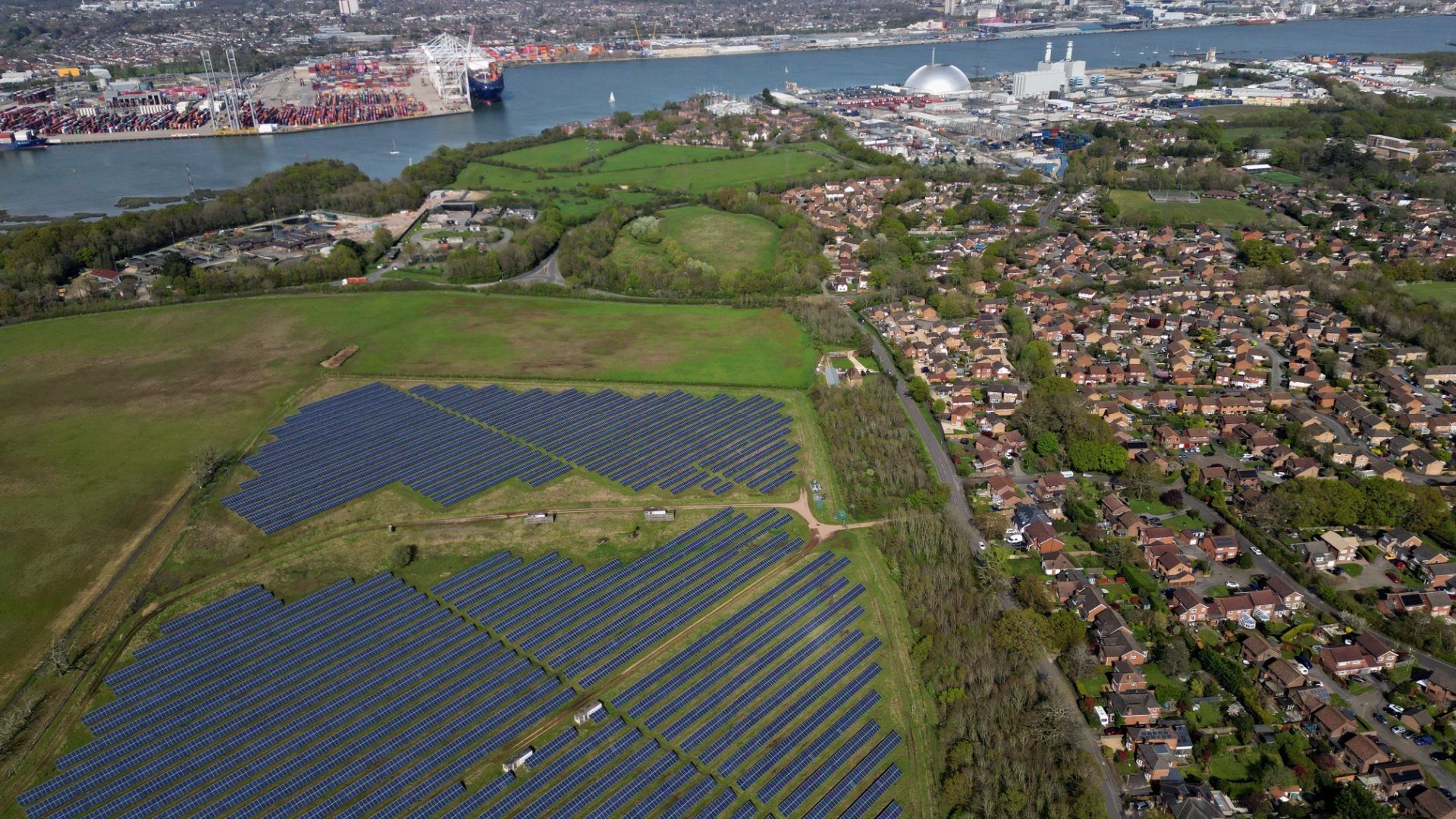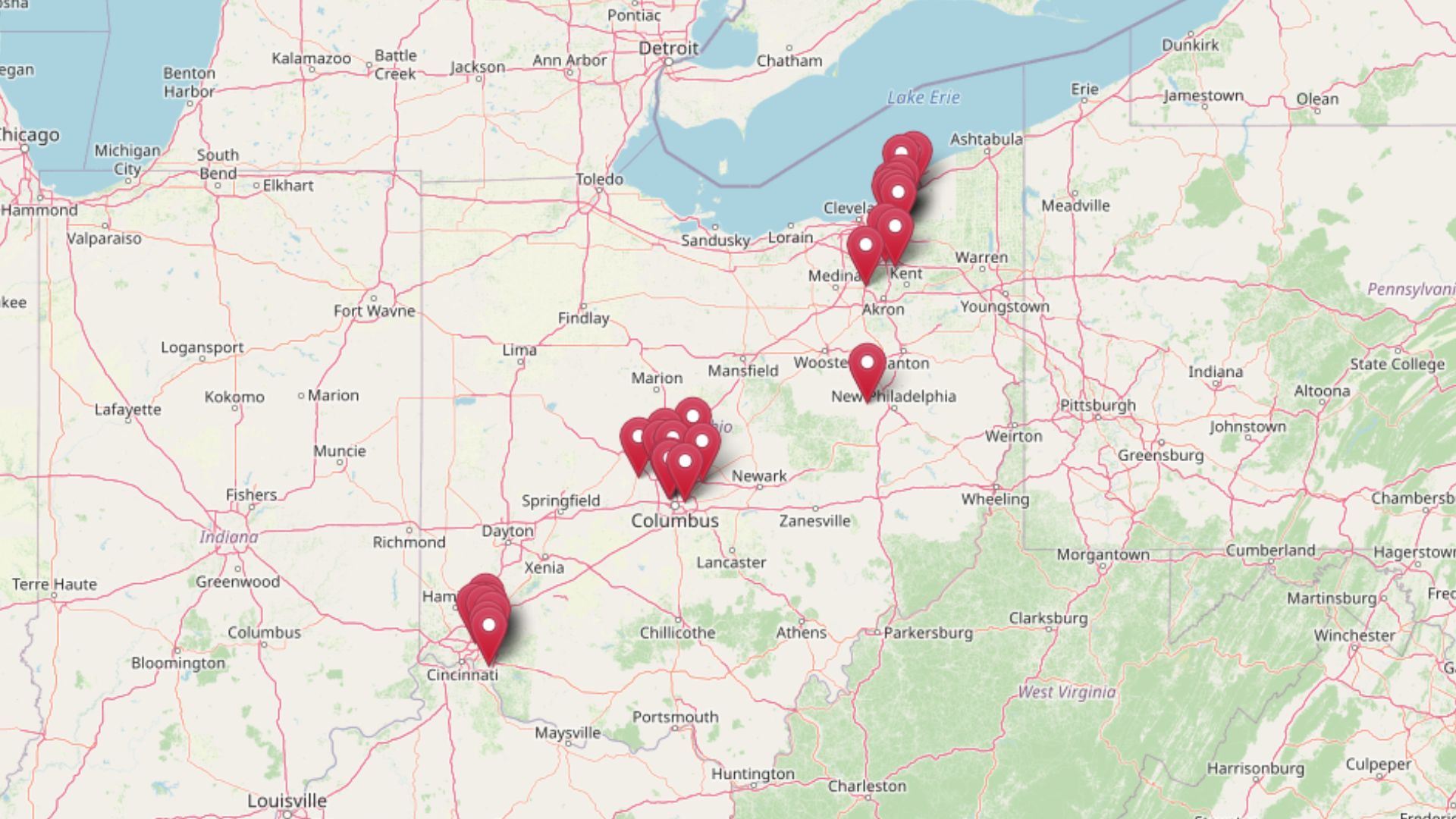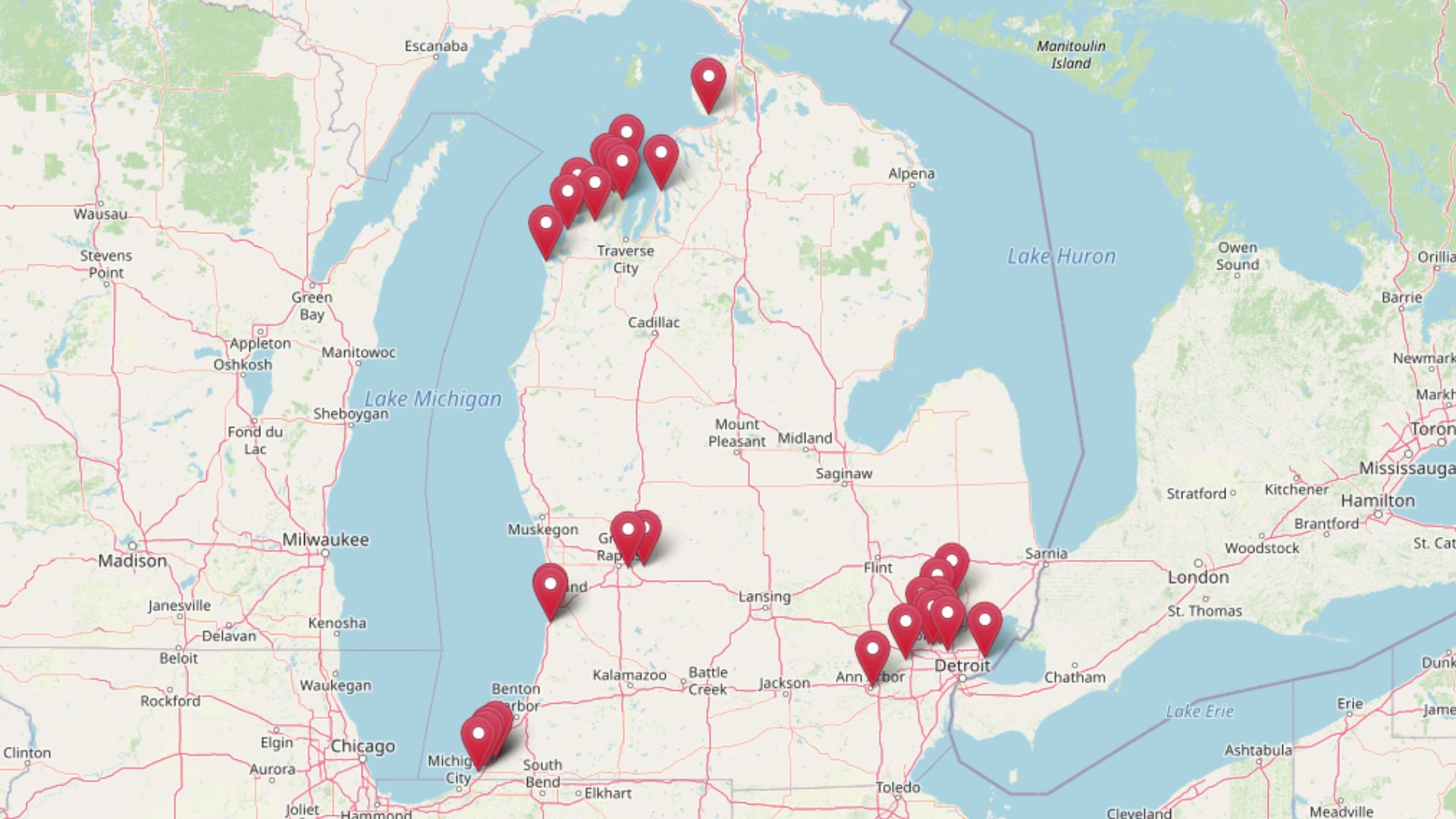As new arrivals to the U.S. settle into communities, start families, and seek housing, they’re reshaping the real estate landscape in ways both subtle and sweeping. Immigration adds millions of people to the population—and with them, demand for apartments, starter homes, and everything in between.
This demand can tighten markets, push up prices, and accelerate growth in places that were once overlooked. In a country already facing a housing shortage, understanding how immigration influences supply, affordability, and neighborhood change isn’t just important—it’s essential.
Current Immigration Trends and Population Growth

Immigration to the U.S. slowed dramatically during the early 2020s due to pandemic disruptions, but it has since rebounded sharply. The latest population estimates show that from mid-2023 to mid-2024, net international migration added about 2.8 million people to the U.S. – accounting for 84% of the country’s total population increase that year. This was part of a continued upswing: net migration was roughly 1.7 million in 2022 and 2.3 million in 2023, reaching the highest levels in over a decade.
This surge marks a rebound to pre-pandemic immigration rates and beyond. According to the Congressional Budget Office (CBO), annual immigration (net inflow) jumped from around 990,000 per year in 2020-2021 to 2.7 million in 2022, and then to 3.3 million in 2023. These figures include people arriving through various channels (work visas, family reunification, refugees, asylum seekers, students, etc.) minus those who leave the U.S. The sharp increase reflects both the easing of COVID-era travel restrictions and policy changes.
Crucially, immigration now drives a dominant share of U.S. population growth. American birth rates have fallen in recent decades, and the population is aging. The Census Bureau projects that starting around 2040, net immigration will account for all U.S. population growth as the number of births barely exceeds deaths. Even today, many communities would be shrinking without an influx of immigrants. In 2022-2023, for example, immigration contributed to population gains in most states – in 16 states it accounted for 100% of growth (offsetting natural decrease or people moving out).
Future Immigration and Housing Needs

Looking ahead, forecasts suggest immigration will remain high by historical standards, though it may not sustain the extreme peaks seen in 2022-2023. The CBO expects net immigration to continue at a healthy pace in the coming decades, making it a key component of future population increases. By the 2040s, essentially all net population growth is projected to come from immigration rather than natural increase. This means millions of additional residents each decade who will need housing.
Household Formation and Housing Demand
A simple way to estimate housing needs is by looking at household formation. A household is formed when one or more people occupy a housing unit, so as population grows, new households form. Housing economists estimate that the recent inflows of immigrants are creating on the order of half a million new households per year in the U.S. For instance, one analysis found that from 2022 to 2024, rising immigration added roughly 500,000 additional households annually in the country.
The Housing Supply Gap
Government and industry projections reinforce that housing construction needs to ramp up to meet this coming demand. The Department of Housing and Urban Development (HUD) and others have identified a large housing supply gap. While estimates vary, the U.S. is millions of homes short of what’s needed. Redfin data analysts note that new construction has lagged so much since the 2008 financial crisis that the nation faces a shortage of between 2 and 6 million housing units in total. Freddie Mac puts the deficit around 1.5 million homes, and Moody’s Analytics estimates it at roughly 2.9 million.
This shortfall formed over years of under-building, and now the rising population – boosted significantly by immigration – intensifies the need for more housing. If annual immigration stays near the million-plus range, homebuilders will need to keep up just to prevent the gap from widening further.
Immigrant Household Formation Patterns

Immigrants contribute substantially to the formation of new households, which directly drives housing demand. Over the past decade, about 4 in 10 new households in the U.S. were headed by an immigrant. In other words, immigrants have accounted for roughly 40% of household growth since 2010, a remarkable share.
Their role has fluctuated over time depending on the economy and native-born housing formation. For example, when the U.S. was recovering from the Great Recession (2010–2015) and fewer Americans were buying homes, foreign-born householders made up about 50% of net household growth. Later, as more native-born Americans started households, the immigrant share of growth fell to about 23% between 2015 and 2019. During the pandemic years (2019–2023), immigrants contributed roughly 25% of new household formation.
From Renting to Homeownership
When immigrants first arrive, they are far more likely to rent than to own. In fact, in their initial years in America, almost 9 in 10 immigrant households are renters. Many new immigrants move in with relatives or friends or find shared housing to save on costs. It’s common for multiple immigrant families or generations to live under one roof at first. This means that early on, a surge in immigration primarily increases rental housing demand.
Over time, as immigrant families settle in, gain economic footing, and grow, many transition from renting to homeownership. Immigrants tend to form their own independent households as they establish themselves. This progression means that immigrant-driven housing demand can start in the rental sector and then extend into the home-buying market as years go by.
Household Size and Structure
It’s important to note that immigrants on average have larger household sizes and sometimes multigenerational households – for instance, a working couple may live with their children and grandparents. This can slightly mask the true housing demand early on because more people share a single housing unit. But as families grow and younger generations move out, one immigrant family might eventually splinter into two or three separate households, all needing homes. Researchers observe that immigrant families’ desire for housing, especially owner-occupied homes, often materializes after an initial adjustment period.
Homeownership Trends Among Immigrants
One striking aspect of immigration’s impact on housing is the difference in homeownership rates between immigrants and the U.S.-born population. Overall, immigrants are less likely to own homes than native-born Americans. This gap exists for a variety of reasons – newcomers often arrive with limited savings and credit history, face language and job barriers, or lack legal status, all of which can delay buying a house.
While about two-thirds of U.S. households are homeowners, the homeownership rate for immigrant-headed households is closer to 50–55% (it varies by group and length of time in the country). For example, a Pew Research study found that in 2008, about 52.9% of immigrant householders were homeowners, compared to 70.0% of native-born householders. The gap has persisted, though it tends to narrow the longer immigrants have lived in the U.S.
Time in Country Matters
Time in the country is a key factor. Immigrants typically start with very low homeownership when they are recent arrivals – as noted, most rent at first. But as they spend more years in the U.S., their homeownership rate rises. They find steadier employment, build credit, save for down payments, and become more familiar with the home-buying process. Studies show that after about 10-15 years in the U.S., many immigrant families approach the national average homeownership rate.
During the 2000s, immigrants made significant gains in buying homes. The foreign-born homeownership rate actually increased in the 2000s even through the housing crash, partly because a larger share of immigrants by 2010 had been in the U.S. longer than 15 years and thus were in a position to own.
Variations by Group and Location
It’s also worth noting that within the diverse immigrant population, homeownership rates vary by ethnic and national groups. Some immigrant communities, like many Asian American immigrants, have homeownership rates comparable to or even higher than the U.S.-born average. Others, especially those facing greater socioeconomic challenges, have lower rates.
Urban versus suburban location also plays a role in immigrant homeownership patterns. Traditionally, many immigrants settled in big cities and rented due to high urban housing costs and initial economic constraints. But in recent years, more immigrants have moved directly to suburbs or moved from city rentals to suburban homes, where single-family houses are more available. The suburbs often offer a path to homeownership for immigrant families seeking more space or better affordability compared to city centers.
Urban vs. Suburban Housing Markets

Immigration patterns have been shifting geographically, with significant implications for urban and suburban housing markets. In the past, new immigrants often clustered in central city neighborhoods – classic “urban enclaves” in places like New York City, Los Angeles, Chicago, or Miami. These gateway cities still have large foreign-born populations and continue to attract immigrants, which sustains housing demand in many urban areas. However, recent decades have seen more immigrants heading straight to suburbs and smaller metros, drawn by job opportunities, lower living costs, and existing immigrant communities in those areas.
In fact, the majority of immigrants in metro areas now live in the suburbs. Research shows that as of the 2010s, about 61% of immigrants in the nation’s largest metro areas lived in suburban areas, up from roughly half in 2000. This means immigrants are increasingly bypassing the traditional inner-city neighborhoods and instead settling in suburban communities.
For example, in the San Francisco Bay Area, a high-cost region, about 86% of Latino immigrant households and 87% of African-born immigrant households live in suburban parts of the metro, not in the city of San Francisco itself. They move to places where they can find single-family homes (often to rent at first) or simply more affordable apartments than in the city center.
The Shift to Suburban Living
Why the shift to suburbs? One reason is housing opportunity. Many immigrants, like other Americans, dream of owning a home with a bit of space. Suburbs offer more single-family homes and often at lower prices than dense city centers. Studies have found that immigrants “are increasingly attracted to single-family homeownership opportunities” in suburban areas.
Growing immigrant families may leave crowded city apartments for a house in a suburban school district once they have the means. Additionally, job growth in suburban zones (for instance, at warehouses, construction sites, service industries, tech parks) draws foreign-born workers directly to those areas. The result is that immigrants now drive housing demand in many suburbs, renting and buying homes there at growing rates.
Impact on Urban Areas
Meanwhile, in urban cores, immigration remains vital for housing demand as well. Large cities like Los Angeles, New York, Miami, and Houston have huge immigrant populations that sustain entire neighborhoods. Immigrants often revitalize city blocks by occupying housing that might have gone vacant as native-born residents move out.
For instance, many Rust Belt cities with population declines (like Detroit, Cleveland, or Buffalo) have used immigration as a strategy to stabilize housing markets. Even a modest number of new immigrant families moving into a struggling city can fill empty homes, keep apartments occupied, and prevent further price declines. Research by economic analysts notes that in declining cities, immigration has helped prevent steeper housing price drops by introducing new demand.
Regional Differences in Impact

The effect of immigration on housing isn’t uniform nationwide; it varies by region and city depending on local conditions. Broadly, high-growth regions that attract many immigrants feel the demand surge more strongly, whereas areas with stagnant populations can absorb new arrivals more easily.
Sun Belt and Coastal Growth
In the booming Sun Belt and coastal metros, immigrants have been a major engine of housing demand. States like Texas, Florida, and California – which are top destinations for immigrant families – have seen significant boosts to their housing markets as a result. For instance, Houston and Las Vegas are cited as Sun Belt cities where immigrants have “fueled housing demand” amid overall population growth.
These places have relatively strong economies and job creation, drawing both immigrants and domestic migrants. Immigrant families add to the demand for both apartments and homes to buy, contributing to rising prices if housing supply doesn’t keep up. In Texas cities, it’s common to see vibrant new subdivisions where a large share of the homebuyers are first-generation immigrant families moving up from renting.
Rust Belt Stabilization
On the other hand, Rust Belt and Midwest cities with flat or declining native populations often experience immigration as a stabilizing or modest growth factor. In cities like Detroit, Cleveland, or Buffalo, decades of population loss left many vacant homes.
In such areas, an influx of immigrants can actually prevent housing demand from collapsing. Immigration has helped stabilize declining populations in these regions. Immigrant homeowners and renters in Cleveland, for example, might purchase and fix up houses in neighborhoods that would otherwise have seen abandonment. By bringing new households, they keep occupancy up and support local housing prices.
Rural Revitalization
Lastly, consider regions like the Great Plains or rural areas which historically saw less immigration. Some of these areas (for instance, small towns in Kansas or Iowa) have invited immigrants to counter population decline. Even a relatively small number of new families can make a difference in keeping schools and housing occupied. The impact on home prices in these rural areas is usually minimal – often housing remains affordable – but immigrants may prevent ghost towns by renting or buying homes that might otherwise sit empty.
Housing Supply Constraints and Immigrant Contributions

When demand rises (more people needing homes) and supply doesn’t keep up (not enough homes available), prices tend to increase. Immigration, by increasing population and households, unquestionably adds to housing demand. However, an often overlooked aspect is that immigrants also affect the supply side of the housing equation.
Construction Workforce
It turns out that immigrants are crucial to housing supply in the U.S. because a significant share of construction workers are foreign-born. Nationally, over 30% of all construction workers are immigrants, and the percentage is even higher in labor-intensive trades and in states like California, Texas, and Florida where building booms have occurred.
In the aftermath of the 2008 housing crash, about 1.7 million native-born workers left the construction industry and many never returned. Immigrant workers (including both authorized and undocumented individuals) helped fill that gap, especially during the 2020-2022 housing surge when there weren’t enough roofers, framers, and laborers to meet the demand for new homes.
This means that immigration helps increase housing supply by providing essential labor. Homes and apartments can’t be built at the needed pace without a robust construction workforce. If immigration is choked off, the construction labor shortage becomes more severe, leading to slower homebuilding.
Neighborhood Revitalization
Beyond labor, immigrants also contribute to supply through neighborhood revitalization and redevelopment. Immigrant entrepreneurs often invest in renovating older homes or apartment buildings in communities where native-born investment has fled.
For example, an immigrant family might buy a run-down triplex, fix it up, live in one unit, and rent out the others. This brings units back to the market that might have been uninhabitable. In cities like Chicago and Philadelphia, immigrant neighborhoods have taken aging housing stock and made it livable and vibrant again. By preventing blight and abandonment, they effectively preserve housing supply that might have been lost.
Impacts on Home Prices and Rents

Perhaps the most debated question is: Do immigrants make housing more expensive? The simplest economic logic says that adding more people to a market will increase competition for a limited supply of homes, tending to raise prices and rents. In reality, though, the effect of immigration on housing costs appears to be modest.
Price Effects in Perspective
Economists often measure this in terms of elasticity: how much do prices change if the population increases by 1%? Academic research indicates that a 1% increase in a city’s population typically leads to roughly a 1% increase in home prices and rents. In other words, if an influx of immigrants (or any people) boosts a city’s population by 1%, housing costs might rise by about 1% as a result, all else being equal. This is a detectable but small effect.
One widely cited study found that a 1% rise in the immigrant population corresponded to only about a 1% uptick in housing prices and rents in that area. A more recent analysis did find somewhat larger effects in certain scenarios – about a 1.6% increase in rents and nearly 10% increase in home prices associated with a 1% immigrant population growth in some metropolitan areas. However, the authors noted that the larger home price effect was likely indirect: as immigrants moved into a city, some native-born residents moved to adjacent suburbs, bidding up home prices in those suburban areas.
Evidence from Recent Years
Recent real-world data reinforces that immigration is not the primary driver of the big swings we’ve seen in housing costs. Consider the timing: U.S. home prices surged unprecedentedly in 2020 and 2021, and rents jumped in 2021 – this was at a time when net immigration was at historic lows (due to the pandemic border closures). The housing boom was instead fueled by low interest rates, pandemic stimulus, and a shift in housing preferences.
Then, in 2022 and 2023, the U.S. experienced a huge surge in immigration numbers – yet house price growth actually slowed down during those years. By 2023, home prices in many areas had cooled off or even dipped from their peak growth rates, and rent increases had flattened, despite the influx of millions of immigrants in that period. This real-world outcome shows that factors like mortgage rates and supply shortages played a much bigger role than immigration in recent housing cost trends.
Supply and Balance
Moreover, as discussed earlier, immigrants also increase housing supply (by working in construction), which can offset upward price pressure. A senior economist noted that because immigrants, especially those who arrive illegally, make up such a large part of the construction workforce, their presence is “having a bigger impact on housing supply than on demand” in many cases. That works to bring down prices overall.
In plain terms, the homes built by immigrant labor help keep prices from rising even more. So, while in the short run immigrants rent or buy available units (adding competition), in the longer run they contribute to increasing the housing stock and stabilizing prices.
Local Policy Matters
It’s also instructive to look at local examples. Cities with very high immigrant populations like Los Angeles or New York are indeed expensive, but they also have restrictive zoning and geographic limits on building, which are big contributors to high prices. Meanwhile, places with lots of immigrants but more building-friendly environments, like Houston or Dallas, have managed to keep housing relatively more affordable even as their populations grew, because they built a lot of new housing. This suggests that policy choices around housing supply determine affordability far more than the level of immigration does.
Conclusion
Immigration is playing an increasingly prominent role in the U.S. housing landscape. Immigrants are responsible for a large share of new household formation, which means they add considerably to housing demand across both rentals and homes for sale. They are settling not only in traditional urban enclaves but also in suburbs and smaller communities, reshaping local housing markets.
At the same time, the impact on housing costs nationwide remains modest – immigration is one factor among many, and it is outweighed by housing supply dynamics and broader economic conditions. The current housing affordability challenges in the U.S. stem from a complex mix of under-supply, low interest rates (in past years), and pandemic-related shifts, rather than immigration alone.
In fact, immigrants are a crucial part of the solution: they contribute to building homes, revitalizing neighborhoods, and even attracting additional economic activity that can lead to more housing development. For every 1,000 immigrants settling in a county, about 250 native-born Americans move there too, drawn by the economic growth immigrants help generate – a testament to the positive feedback loop immigration can create.
Going forward, demographic trends make it clear that immigrants will be central to U.S. housing demand. Virtually all net population growth in the coming decades is expected to come from immigration. This means the fate of the housing market – from entry-level rentals to homeownership – is closely tied to how we accommodate and integrate new Americans.
Ensuring there is enough housing for a growing population will require addressing the supply shortfall by constructing more units and removing barriers to development. It will also require policies that help immigrants succeed economically so they can afford homes, such as access to good jobs and fair mortgages.
Immigration is helping to sustain the American housing market by adding new demand and injecting life into communities, all while contributing to the workforce that builds and services our homes. Managing the balance of housing supply and demand in an age of high immigration will be critical – but with smart planning, the United States can leverage its immigration trends to create thriving, affordable communities for all.
References
- International Migration Boosts U.S. Population Growth – Business Facilities
- How Have Recent Immigration Increases Impacted U.S. Housing Costs? – The MortgagePoint
- The Demographic Outlook: 2024 to 2054 – Congressional Budget Office
- Explainer: Immigrants and Housing – National Immigration Forum
- Immigration drives the nation’s healthy post-pandemic population growth, new census data show – Brookings Institution
- Trump links immigrants to high US housing prices, researchers disagree – Reuters
- 2024 Housing Market Year In Review – Redfin
- How 40 Million Immigrants Create Housing Wealth and Stabilize Communities – New American Economy
- Minorities, Immigrants and Homeownership – Pew Research Center
- Homeownership – National Equity Atlas
- Fannie Mae Housing Insights – Fannie Mae






